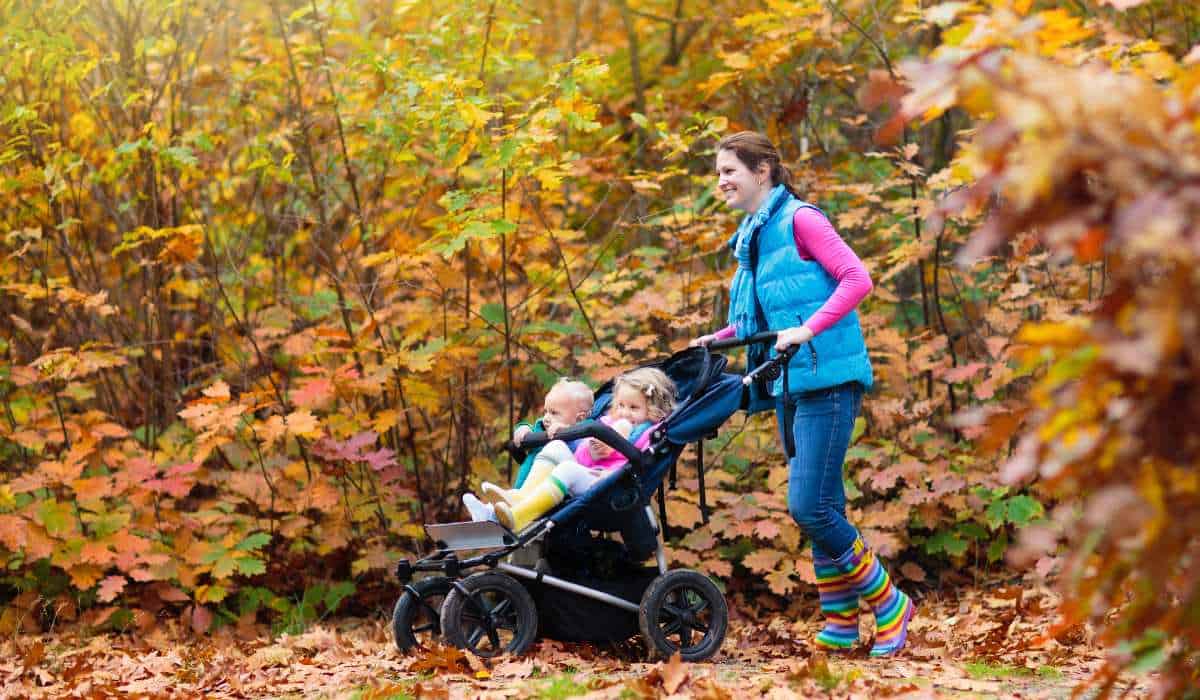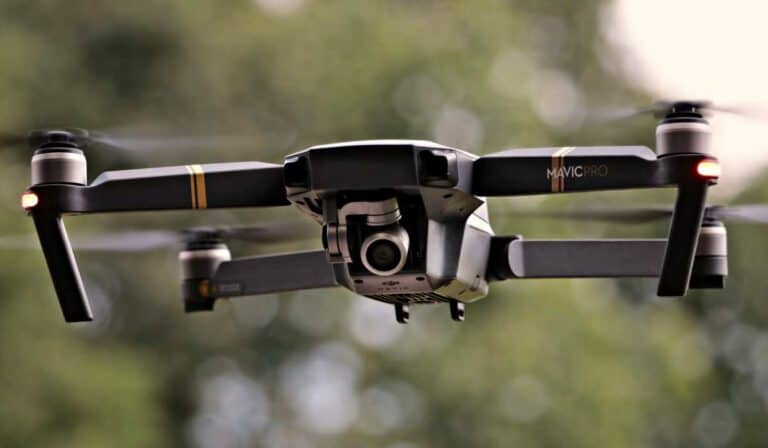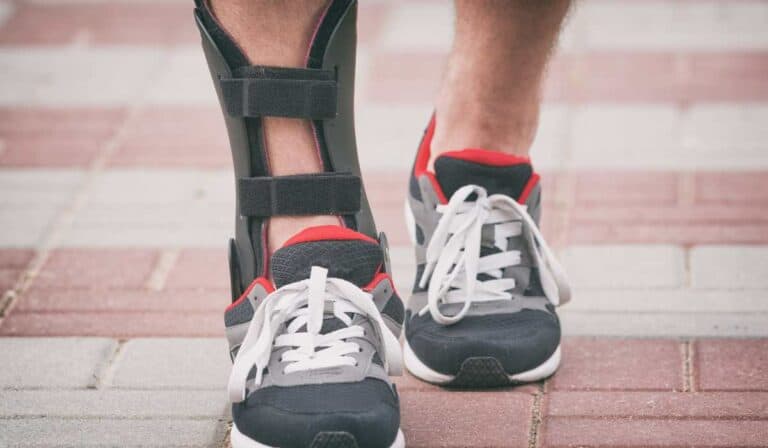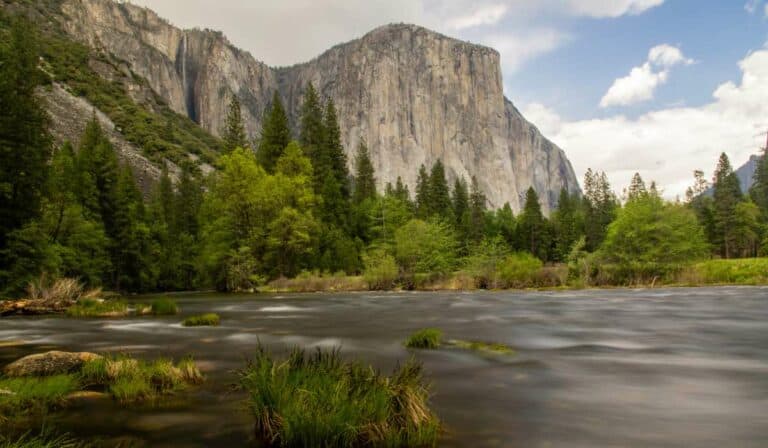Best Strollers for Hiking
Finding the perfect stroller for a hike can be quite difficult, particularly when considering safety and comfort for your child while traversing nature. In this comprehensive guide, we will dive into various aspects of choosing and using hiking strollers effectively.
We’ll discuss the benefits of using all-terrain strollers for off-road adventures and highlight essential features to look for in a reliable hiking stroller. Additionally, we’ll provide valuable tips on selecting the perfect model tailored to your specific needs.
Furthermore, our guide covers crucial safety measures when navigating rugged terrain with a baby jogger and offers practical advice on how to make your child’s experience enjoyable during hikes. Lastly, we address common mistakes made by parents when utilizing these specialized strollers so that you can avoid potential pitfalls on your outdoor excursions.
Table of Contents
1. Choosing the Right Stroller for Hiking

Embarking on outdoor adventures with your little ones can be a rewarding and memorable experience. To ensure that everyone enjoys their time exploring nature, it’s essential to select the best stroller for hiking. In this section, we’ll guide you through some key factors to consider when choosing a stroller suitable for your family’s needs.
A. Terrain Compatibility
When choosing a stroller, ensure it is compatible with the terrain you plan to explore. Some strollers are designed specifically for smooth surfaces like sidewalks or parks, while others are built to handle rougher trails and uneven ground. Look for all-terrain strollers with sturdy frames, large air-filled tires, and suspension systems that provide a smoother ride over various terrains.
B. Weight Capacity & Age Range
Hiking strollers come in different sizes and weight capacities; make sure you choose one that accommodates your child’s age range and growth potential adequately. Check the manufacturer’s recommendations regarding maximum weight capacity before making a decision.
C. Foldability & Portability
- Foldable: A foldable design allows you to easily store and transport the stroller when not in use – an essential feature if space is limited in your vehicle or home.
- Weight: Consider how heavy the stroller is since lighter options will be easier to maneuver on trails as well as lift into vehicles after long hikes.
- Ease of assembly/disassembly: You may need to assemble or disassemble the stroller for storage or transportation, so look for models that are easy to put together and take apart.
D. Comfort & Safety Features
When choosing a hiking stroller, prioritize your child’s comfort and safety. Some features to consider include:
- Padded seats: Ensure the seat is well-cushioned for maximum comfort during long hikes.
- Reclining options: A reclining seat allows your child to nap comfortably on the go.
- Sun canopy: Protect your little one from harmful UV rays with an adjustable sun canopy. Some canopies also offer rain protection – perfect for unpredictable weather conditions.
- Harness system: Opt for a secure harness system (preferably a five-point harness) that keeps your child safely in place while you’re navigating rough terrain.
Taking these factors into account will help ensure you choose the right hiking stroller tailored to both your and your child’s needs, making outdoor adventures enjoyable experiences filled with lasting memories.
Selecting an appropriate buggy for trekking is critical to guarantee a secure and pleasant experience. Considering the importance of selecting an appropriate stroller for a hiking adventure, let’s explore some advantages that come with utilizing such a device.
Key Points To Remember:
When choosing a stroller for hiking, consider the terrain compatibility, weight capacity and age range, foldability and portability, as well as comfort and safety features. Look for all-terrain strollers with sturdy frames, large air-filled tires, and suspension systems that provide a smoother ride over various terrains; ensure the seat is well-cushioned for maximum comfort during long hikes; opt for a secure harness system (preferably a five-point harness) that keeps your child safely in place while you’re navigating rough terrain.
Click here to read about Discover the Best Hiking Jackets for Women
2. Benefits of Using a Stroller for Hiking
In this section, we’ll explore some of the top advantages that come with utilizing a hiking stroller during your family excursions.
Enhanced Comfort for Your Child
Hiking strollers are equipped with features such as large air-filled tires, suspension systems, and padded seats that provide a smoother ride over rough terrain compared to traditional strollers. This means your child will enjoy greater comfort throughout the hike, reducing fussiness and allowing them to better appreciate their surroundings.
Increased Convenience for Parents
Parents also benefit from the convenience offered by hiking strollers – they often include ample storage space for essentials like snacks, water bottles, diapers, and extra clothing layers. Additionally, many models feature adjustable handlebars which allow parents of different heights to comfortably push the stroller without straining their backs or shoulders.
Improved Safety Features
Safety is paramount when it comes to choosing any type of baby gear, especially one meant for rugged outdoor use like a hiking stroller. These specialized devices typically have enhanced safety features such as five-point harnesses that securely hold your child in place while you navigate uneven paths or inclines.
Durability & Stability
- Hiking strollers are built with sturdy materials designed to withstand the rigors of outdoor use, ensuring a long-lasting investment.
- They also have wider wheelbases and lower centers of gravity for increased stability on uneven terrain, reducing the risk of tipping over.
Encourages Family Bonding & Exploration
Using a hiking stroller allows your family to explore nature together without limitations. It enables you to introduce your child to the wonders of the great outdoors at an early age while creating lasting memories as you bond over shared experiences. Plus, it’s an excellent way for parents to stay active and maintain their love for hiking even with young children in tow.
Environmentally Friendly Transportation Option
Last but not least, opting for a stroller-powered hike is an eco-friendly choice that reduces carbon emissions compared to driving or using motorized transportation methods during your outings. By choosing this green alternative, you’re teaching your little ones about environmental responsibility from a young age.
Exploring the advantages of utilizing a stroller for hiking, such as comfortability, ease and security, can be beneficial. Now let’s take a look at the features to consider when selecting a suitable stroller for your next outdoor adventure.
Key Points To Remember:
Hiking strollers offer enhanced comfort, convenience, safety features, durability and stability for parents and children during outdoor adventures. They also encourage family bonding and exploration while providing an eco-friendly transportation option.
3. Features to Look For in a Hiking Stroller

When selecting a stroller for your outdoor adventures, it’s important to make sure it can handle the terrain and provide comfort for both you and your child. Here are some key features to look for when selecting the perfect hiking stroller:
- All-Terrain Wheels: A good hiking stroller should have large, air-filled tires that can easily navigate rough surfaces like rocks, roots, and uneven ground. These wheels will provide better traction and stability compared to standard plastic wheels found on most urban strollers. Check out this list of top all-terrain strollers for inspiration, including the Thule Urban Glide 2 and the Baby Jogger City Mini GT2.
- Suspension System: To ensure a smooth ride for your child even on bumpy trails, opt for a stroller with an adjustable suspension system. This feature helps absorb shocks from rough terrain while providing additional support and comfort during long hikes. The Baby Jogger Summit X3 and the Chicco Tre are great options with excellent suspension systems.
- Durable Frame: Your hiking stroller needs to be sturdy enough to withstand outdoor elements such as dirt, mud, water splashes, or snowfall without breaking down over time. Look for models made from high-quality materials like aluminum or steel frames that offer durability without adding too much weight. The Baby Jogger City Select and the Jeep Deluxe Patriot are both known for their rugged frames.
- Foldable Design & Compact Size: It’s important that your chosen hiking stroller is easy to fold up and store when not in use or transport between locations if needed. A compact design also makes maneuvering through narrow trails easier. The Baby Trend Expedition and the Baby Jogger City Mini GT2 are both lightweight and easy to fold.
- Padded Seat & Reclining Options: Comfort is key. Make sure the seat is well-padded and offers multiple reclining positions to accommodate your child’s needs during the hike. A fully reclined position can be especially helpful for nap times on the go. The Baby Jogger Summit X3 and the Thule Urban Glide 2 both have comfortable, padded seats with multiple reclining options.
- Adjustable Handlebar: To ensure a comfortable pushing experience, choose a stroller with an adjustable handlebar that can be customized to match your height. This will help prevent strain on your back and shoulders while hiking. The Thule Urban Glide 2 and the Baby Jogger City Select both have adjustable handlebars.
- Safety Features: Your child’s safety should always come first. Look for features such as a five-point harness, hand brake, wrist strap, and reflective accents to keep both you and your little one safe during outdoor adventures. The Baby Jogger Summit X3 and the Chicco Tre both have excellent safety features.
For extra convenience, you can consider additional features such as sun shades, rain covers, snack trays or cup holders and storage compartments. Some popular options include sun shades or rain covers for weather protection, snack trays or cup holders for convenience on the go, and storage compartments for carrying essentials like diapers or extra clothing. If you’re on a tight budget, the Baby Trend Expedition is a great stroller that offers many of these features at an affordable price. Explore various models available in the market by reading reviews from fellow parents who have tried them out – websites like BabyGearLab offer comprehensive comparisons of different strollers.
When selecting a hiking stroller, it’s essential to evaluate the features that will best meet your and your child’s requirements. With these pointers, you can effortlessly pick out the ideal stroller for your next outdoor excursion. Once you’ve decided on the features that best suit your needs and those of your child, selecting a hiking stroller can be easier.
Key Points To Remember:
When selecting a hiking stroller, look for features such as all-terrain wheels, adjustable suspension systems, durable frames made from high-quality materials like aluminum or steel, foldable designs with compact sizes and padded seats that offer multiple reclining positions. It’s also important to choose models with adjustable handlebars and safety features like five-point harnesses and reflective accents. Optional add-ons include sun shades or rain covers for weather protection, snack trays or cup holders for convenience on the go, and storage compartments for carrying essentials like diapers or extra clothing.
Click here to read about Discover the Best Hiking Trails in Southern Vermont
4. Tips for Picking the Best Stroller for Your Needs
When deciding on a stroller for your family’s hiking trips, these tips can help you select the ideal one that meets all of your needs. Consider factors such as terrain, weight capacity, and additional features when making your decision.
A) Assess Your Hiking Terrain
Before selecting a stroller, think about where you plan to hike most often. Will it be mostly paved paths or more rugged trails? Some strollers are made specifically for use on off-road surfaces, featuring larger wheels and shock absorbers that help them traverse rougher trails. If you’re planning on tackling a variety of terrains, consider an all-terrain stroller such as the Thule Urban Glide 2 or the Baby Jogger Summit X3.
B) Check Weight Capacity
Ensure the stroller you choose can safely hold your child’s weight as they grow by checking its maximum capacity. Most hiking strollers have higher weight capacities than traditional models – some even go up to 75 pounds. Before buying, ensure you read the manufacturer’s instructions. The Baby Jogger City Select and the Baby Jogger City Mini GT2 are great options for higher weight capacities.
C) Look For Adjustable Features
- Handlebar: An adjustable handlebar allows parents of different heights to comfortably push the stroller without straining their backs. The Baby Jogger Summit X3 has an adjustable handlebar.
- Sun Canopy: A large sun canopy with multiple positions will help protect your little one from harmful UV rays during sunny hikes. The Chicco Tre has a large adjustable canopy.
- Reclining Seat: A reclining seat is essential if you want your child to nap comfortably while out on long hikes. The Baby Trend Expedition has a padded seat that reclines.
D) Consider Storage Options
When hiking with a stroller, you’ll need space to store essentials like snacks, water bottles, and extra layers. Look for models that have ample storage compartments or even built-in cup holders for added convenience. The Jeep Deluxe Patriot has a large storage basket and the Baby Jogger City Mini GT2 has a built-in cup holder.
E) Test Drive Before Buying
If possible, try out different strollers in person before making your final decision. Try out different strollers in person to get a feel for how they move and store when not in use. You can visit local baby gear stores or even ask friends who own hiking strollers if you can test drive theirs.
By considering these tips while shopping for a hiking stroller, you’ll be able to find the perfect one that meets all your family’s needs and ensures enjoyable outdoor adventures together.
Considering the terrain and attributes of your hiking spot, you can decide on an ideal stroller for your needs. Next, let’s look at how to safely traverse trails with a stroller for maximum enjoyment of the outdoors.
Key Points To Remember:
When choosing a stroller for hiking, consider the terrain you’ll be on and opt for an all-terrain model like the Thule Urban Glide 2 or Baby Jogger Summit X3. Look for adjustable features such as handlebars, sun canopies, and reclining seats to ensure comfort during long hikes. Don’t forget to check weight capacity and storage options before making your final decision.
5. How to Use a Stroller Safely on Trails

Ensure your safety and that of other hikers by using a stroller responsibly on trails when hiking with your child. Follow these tips to make sure you have an enjoyable hiking experience with your little one.
a) Choose the Right Trail
Selecting an appropriate trail is crucial when using a stroller for hiking. Opt for wide, well-maintained paths that are relatively flat and free from obstacles such as rocks or roots. Avoid narrow or steep trails where maneuvering the stroller might be difficult or dangerous. Websites like AllTrails can help you find suitable routes in your area.
b) Check Weather Conditions
Prioritize safety by checking weather conditions before embarking on any hike with your child in tow. Rainy days may cause slippery surfaces, while extreme heat could pose risks to both your and your baby’s health during outdoor activities.
c) Secure Your Child Properly
Always ensure that your child is securely fastened into their seat using the provided harness system before setting off on any hike with a stroller. This will prevent them from slipping out or getting injured if the terrain becomes bumpy unexpectedly.
d) Lock Your Stroller’s Wheels When Necessary
- Straight Path: On straight sections of the trail without sharp turns, locking the front wheels can provide better stability and control over rough terrain.
- Tight Turns: Unlocking swivel wheels allows for easier navigation around tight corners or switchbacks found along some trails.
e) Maintain a Safe Speed
While hiking with a stroller, it’s essential to maintain a safe and manageable speed. Going too fast can lead to accidents or losing control of the stroller on uneven terrain. Keep in mind that your child’s comfort should always be prioritized over completing the hike quickly.
f) Be Aware of Other Hikers
When using a stroller on trails, remember that you share the space with other hikers who may not be expecting to encounter families with young children. Always yield the right-of-way when necessary and be courteous by stepping aside if needed for others to pass safely.
g) Regularly Inspect Your Stroller
Maintaining your stroller for hiking is crucial for ensuring its safety and longevity. Check all components regularly, such as wheels, brakes, harnesses, and frame connections – tighten any loose parts or replace damaged ones promptly.
When it comes to hiking strollers, all-terrain strollers tend to be the best option. The Baby Jogger City Mini GT2 and Baby Jogger Summit X3 are both excellent choices for hiking trails. Regular strollers may not be suitable for rough terrains, but a double all-terrain stroller like the Thule Urban Glide 2 or the Baby Jogger City Select can provide a smooth ride for both you and your child. If you’re on a tight budget, the Baby Trend Expedition is a great stroller that features all-terrain wheels and an infant car seat. The Chicco Tre and Jeep Deluxe Patriot are also good options for hiking with a baby.
Remember to prioritize safety and comfort when selecting the perfect stroller for your hiking needs. Look for strollers with padded seats that recline for a comfortable ride, large wheels or larger tires for a smooth ride on rough terrain, and a storage basket or diaper bag for convenience.
By following these guidelines while using a stroller on trails, you’ll ensure an enjoyable outdoor experience for both you and your little one.
It may be possible to take your offspring on a trek with the correct buggy and some watchful arranging. To guarantee a positive outing, it is wise to adhere to certain guidelines when pushing your kids in a stroller while out on the trail.
Key Points To Remember:
To use a stroller safely on hiking trails, choose an appropriate trail and check weather conditions. Secure your child properly with the harness system, lock wheels when necessary, maintain a safe speed and be aware of other hikers. All-terrain strollers like Baby Jogger City Mini GT2 or Thule Urban Glide 2 are good options for hiking with babies while prioritizing safety and comfort features such as padded seats that recline, large wheels/tires for rough terrain and storage baskets/diaper bags can make it more convenient.
Click here to read about Explore Easy Hikes in South Lake Tahoe
6. Best Practices When Taking Kids Hiking with a Stroller
Taking kids on a hike with a stroller can be an enjoyable experience for the whole family, but following best practices is key to ensuring everyone stays safe. However, it’s essential to follow some best practices to ensure everyone stays safe and has fun during the adventure. Here are some tips on how to make the most of your outdoor excursions:
Choose Appropriate Trails
Select trails that are suitable for strollers, as not all paths will accommodate them comfortably or safely. Look for wide, well-maintained trails with relatively flat terrain and minimal obstacles such as rocks or roots. You can find information about hiking strollers by checking AllTrails, local park websites, or joining online forums dedicated to hiking families.
Pack Essential Items
- Baby essentials: Bring diapers, wipes, extra clothes, sunscreen, insect repellent (if needed), snacks, and water.
- Safety gear: Pack a small first aid kit in case of minor injuries along the way.
- Navigational tools: A map or GPS device is crucial when exploring unfamiliar trails; don’t rely solely on your smartphone as battery life may be limited in remote areas.
- Weather protection: Dress appropriately for the weather conditions and pack rain gear if necessary.
Maintain Proper Etiquette on Trails
Show respect towards other hikers by practicing good trail etiquette while using a stroller:
- Greet fellow hikers courteously; they might have valuable advice about upcoming hiking trails.
- Yield the trail to other hikers, especially when navigating narrow sections or steep inclines. This will help prevent accidents and ensure everyone has a pleasant experience.
- Stay on designated trails to protect the environment and avoid disturbing wildlife.
Monitor Your Child’s Comfort
Keep an eye on your child throughout the hike, ensuring they are comfortable and enjoying themselves. Make frequent stops for diaper changes, snacks, water breaks, or simply to let them stretch their legs if they’re old enough. Encourage them to engage with nature by pointing out interesting plants, animals, or landmarks along the way.
Know When It’s Time to Turn Back
If you encounter unexpected obstacles such as fallen trees or flooded paths that make it unsafe for stroller use, don’t hesitate to turn back. Additionally, pay attention to your child’s mood; if they become fussy or tired despite taking breaks and addressing their needs, it may be best to cut the hike short and try again another day.
Taking kids hiking with a stroller can create lasting memories while fostering a love of nature in young hearts. By following these best practices during your outdoor adventures together at SunWaterDirt.com destinations around the planet Earth.
By following the best practices when taking kids hiking with a stroller, you can ensure that your family has an enjoyable and safe outdoor adventure. Now let’s explore common mistakes to avoid when using a stroller for hiking.
Key Points To Remember:
When taking kids hiking with a stroller, it’s important to choose appropriate trails and pack essential items such as baby essentials, safety gear, navigational tools, and weather protection. Additionally, practicing good trail etiquette and monitoring your child’s comfort is crucial for a safe and enjoyable experience. Don’t hesitate to turn back if unexpected obstacles arise or your child becomes fussy or tired.
7. Common Mistakes When Using a Stroller for Hiking

Hiking with children while pushing a stroller can be an enjoyable experience, yet it’s essential to dodge the most regular blunders that could put your little one in danger or make the journey less delightful. Here are some of the most frequent errors parents make and how you can steer clear of them:
1. Choosing the Wrong Type of Stroller
Selecting a stroller that isn’t designed for outdoor adventures is one of the biggest mistakes parents make when planning to hike with their children. Regular strollers may not have adequate suspension, tires, or maneuverability for rough terrain. Instead, opt for jogging or all-terrain strollers, which are specifically built to handle off-road conditions.
2. Overloading Your Stroller
Avoid overburdening your stroller with too much weight from bags and other items as this might cause instability on uneven surfaces and increase the chances of tipping over. Always check your chosen stroller’s weight limit before setting out on a hike.
3. Neglecting Maintenance Checks
Failing to perform regular maintenance checks on your hiking stroller can lead to problems during your trip such as flat tires or loose parts affecting its performance and safety features like brakes malfunctioning at crucial moments. Make sure you inspect and maintain your equipment regularly by following manufacturer guidelines.
Maintenance Tips:
- Clean dirt and debris from wheels after each use.
- Check tire pressure and inflate as needed.
- Inspect brakes for proper functioning.
- Tighten any loose bolts or screws on the frame.
4. Not Planning Your Route Wisely
Picking a trail that is too difficult or not stroller-friendly can make your hike frustrating and potentially dangerous. Research trails in advance to ensure they are suitable for strollers, taking into consideration factors like terrain, elevation changes, and potential hazards such as narrow paths or steep inclines. Websites like AllTrails offer helpful information about various hiking routes, including difficulty levels and user reviews from fellow hikers with strollers.
5. Ignoring Weather Conditions
Hiking in extreme weather conditions may not only be uncomfortable but also unsafe for you and your child. Always check the forecast before heading out on a hike to avoid surprises like heavy rainstorms or scorching heat waves that could put a damper on your adventure – literally. Invest in appropriate gear such as sun shades, rain covers, and warm blankets to keep your little one comfortable during changing weather conditions.
Avoid these common mistakes when using a stroller for hiking by choosing the right equipment, maintaining it properly, planning your route wisely, and being prepared for varying weather conditions. With some foresight and attention to detail, you’ll be well-equipped to enjoy safe outdoor adventures with your family.
Key Points To Remember:
Selecting the correct stroller and avoiding overburdening it are critical for a successful trek with a pram. Regular maintenance checks are crucial for ensuring safety, as is planning your route wisely and being prepared for changing weather conditions. By avoiding common mistakes like these, you can enjoy safe outdoor adventures with your family.
Click here to read about How Many Miles Should You Hike
FAQs About Best Strollers for Hiking.
What are the most important features to consider when choosing a stroller for hiking?
The most important features to consider when choosing a stroller for hiking include sturdy construction, suspension system, all-terrain wheels, adjustable handlebar height, easy folding mechanism, and storage capacity. A five-point harness and canopy with UV protection are also essential for your child’s safety and comfort.
Are there any special considerations that need to be taken into account when using a stroller on trails or rough terrain?
When using a stroller on trails or rough terrain, ensure it has appropriate tires (air-filled or foam-filled), a good suspension system, a locking front wheel feature for stability over uneven ground, and adequate clearance between the bottom of the stroller and the ground. Additionally, always use wrist straps as an extra safety measure while navigating challenging terrains.
How much weight can the average stroller handle while hiking?
The average hiking stroller can typically handle weights up to 50 pounds (22 kg) in its main seat area. However, some models may accommodate higher weight limits of up to 75 pounds (34 kg). It is crucial to check manufacturer guidelines before embarking on hikes with your child in their respective age group.
What type of suspension is best for a smooth ride over uneven ground while hiking with a stroller?
A three-wheel design with adjustable shock-absorbing suspension systems offers optimal performance over uneven grounds during hikes. This type of suspension ensures better maneuverability and smoother rides by absorbing bumps effectively without compromising stability.
Are there any specific safety precautions that should be taken when using a stroller for hiking?
Safety precautions include ensuring proper tire inflation levels; securing your child with five-point harnesses; engaging parking brakes when stationary; using wrist straps on rough terrains; and staying aware of your surroundings, including wildlife, weather conditions, and trail obstacles. Also, avoid overloading the stroller with additional items beyond its recommended weight capacity.
Conclusion
The quality of your stroller can totally alter your outdoor experience. Features such as all-terrain wheels, a padded seat that reclines, and ample storage space are essential for a comfortable ride on rough terrains. When selecting a stroller, it’s essential to consider safety features and your financial plan.
If you’re planning to take kids hiking with a stroller, be sure to follow best practices such as keeping them secure with straps and avoiding steep or rocky trails. With the right stroller and preparation, you can enjoy nature while keeping your little ones safe.
Ready to hit the trails? Check out SunWaterDirt, where we offer high-quality outdoor gear including some of the best strollers for hiking at affordable prices. Don’t let anything hold you back from exploring our beautiful planet!







